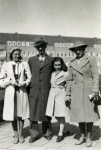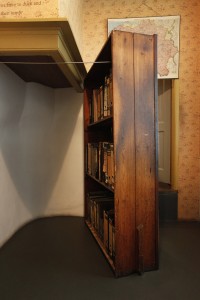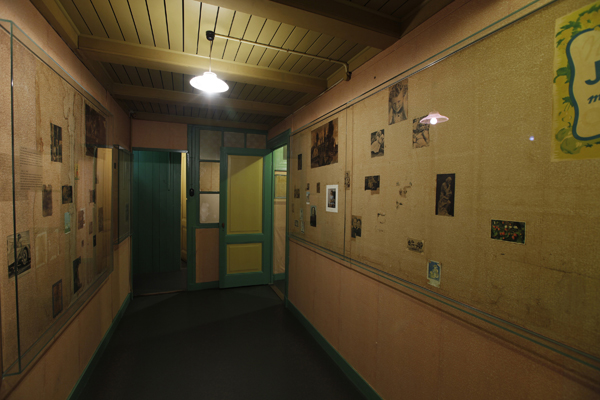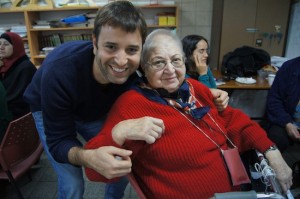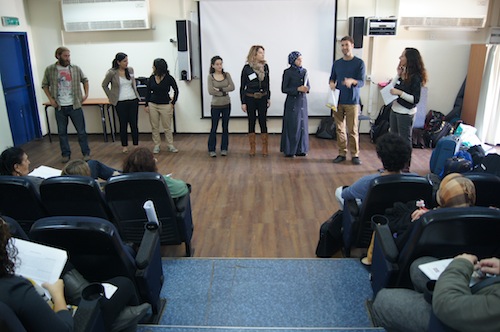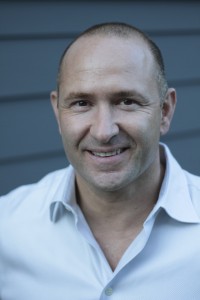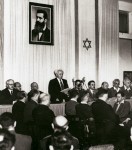Rabbi Philip Bregman (photo from students.ubc.ca)
Rabbi Philip Bregman is a longstanding leader in the Jewish community. He served as senior rabbi at Temple Sholom for 33 years and is still connected with the congregation as rabbi emeritus. He is co-founder of the Rabbinical Association of Vancouver, maintains an active role on the University of British Columbia chaplaincy and serves as co-chair for Vancouver’s Jewish-Christian Dialogue group. He joined Vancouver Hillel Foundation during its transition period and is now the executive director of the organization, which officially became Hillel BC Society last month.
Hillel has been a centre for Jewish life on campus at UBC since 1947. Bregman would like to expand on its foundation, diversifying the programming and making it more available to young Jewish adults throughout the Lower Mainland.
The purpose of Hillel BC Society, explained Bregman, “is to help facilitate the growth of young Jewish souls and minds, socially, mentally, gastronomically, intellectually, politically. To understand what does it mean for you to be a Jew in the world today…. We are trying to grow young Jewish adults and start from wherever they are starting and give them a sense that this is a home, this is a safe space and, for some, a continuation of their Jewish journey and, for others, a beginning of their Jewish journey.”
As in most Jewish homes, food plays an integral role at Hillel BC. Noting that Hillel provides “some of the best food in the city in terms of good, nutritional, tasty, delicious food, kosher food,” Bregman said, “A lot of our programs operate around food as a way of getting individuals into the building. Then, once we have them in the building, we have other programs to offer them as well. For example, a barbeque may very well be the thing that brings the individual into the building, but we also may happen to have a faculty member here from Jewish studies who will be teaching Talmud” or, “on Friday mornings, come for the most phenomenal shakshuka, but what comes with the shakshuka is also a discussion about Israel, social, political, religious discussions.”
Hillel BC’s reach extends beyond the Jewish community of UBC. “We do a lot of collaboration,” said Bregman. “We have done collaboration with the synagogues, we have done collaboration with the Vancouver Holocaust Education Centre, we do collaborations with CIJA, the Centre for Israel and Jewish Affairs, and so we are giving educational opportunities…. We teach Hebrew, we have Judaism 101 courses, and we have the opportunity to engage in dialogue programs with different Muslim student associations, with the Pakistani student association … aboriginal student organizations on campus and various Christian groups, as well.”
Hillel offers many students leadership opportunities because a lot of programming comes “from a collaboration between the programs’ staff and the Hillelniks, so some things are initiated by us and some things are initiated by the students themselves.”
Young Jewish adults at Hillel BC have the opportunity to get “involved in tikkun olam, in helping to repair the world…. We make peanut butter and jam [sandwiches] with the Ismaili Students’ Association. The sandwiches get taken down to the Downtown Eastside.” There are also various clothing drives or food bank drives, he said. Additionally, Hillel offers many students leadership opportunities because a lot of programming comes “from a collaboration between the programs’ staff and the Hillelniks, so some things are initiated by us and some things are initiated by the students themselves.”
Bregman is moving Hillel towards more diverse programming and events, “so a person can come into this building and see we are involved with a multiplicity of ideas.” This approach is reflected in the organization’s recent rebranding. “We are no longer Vancouver Hillel Foundation, we are Hillel BC Society and this came from the staff,” Bregman explained. “The idea of being Vancouver Hillel was too centrist and too isolating…. [It] makes no sense when one of our places we are dealing with is Burnaby or one of the places we are dealing with is Victoria and wherever else that I hope to open up in the next little while.”
Hillel BC is working to engage young Jewish adults in new ways because “the old paradigm of how to deal with things doesn’t hold anymore … you cannot depend on Jewish identity if you are only planting two trees, [focusing only on] Israel and [the] Holocaust. Are they important? Of course, they are. But so is social integration and Jewish identity in terms of what it means today, and so is asking, ‘How do I live in this world?’… So, the challenges are to provide the opportunities to individuals to see Hillel as a springboard for many other things.”
“Our major issue is around funding, it is around finance. There is a statement in the Talmud, ‘Ein kemach, ein Torah.’ Without wheat, referring to the substance, the money, if there is no money, there is no Torah and, if there is no Torah, there is no money….”
Bregman said, “Our challenges are not in the areas of programming, and I’m pleased to say not in the areas of staffing. I have an absolutely magnificent staff.” He said, “Our major issue is around funding, it is around finance. There is a statement in the Talmud, ‘Ein kemach, ein Torah.’ Without wheat, referring to the substance, the money, if there is no money, there is no Torah and, if there is no Torah, there is no money…. We are providing the Torah, the programming,” but “what we need, of course, is the financial means to continue this and that’s the greatest challenge.”
Bregman is positive about the future of Hillel BC Society. “This year, my first year, I came in and we were serving three campuses. We now serve five because I opened up Langara and I opened up Emily Carr,” he said. “Now, I’m looking to see what else needs to be opened up in the Lower Mainland, where we think there is some type of Jewish presence, because what has happened at Langara and Emily Carr has been tremendously successful.”
He emphasized, “I want Hillel there as a torchbearer and as an or l’goyim, a light unto the nations, to let people know that when you come into Hillel, you have a multiplicity of opportunities to meet all sorts of individuals, politicians, social activists, philosophers, individuals with unbelievably great hearts and souls.”
Zach Sagorin is a Vancouver freelance writer. He is on the board of the Jewish Students’ Association.




